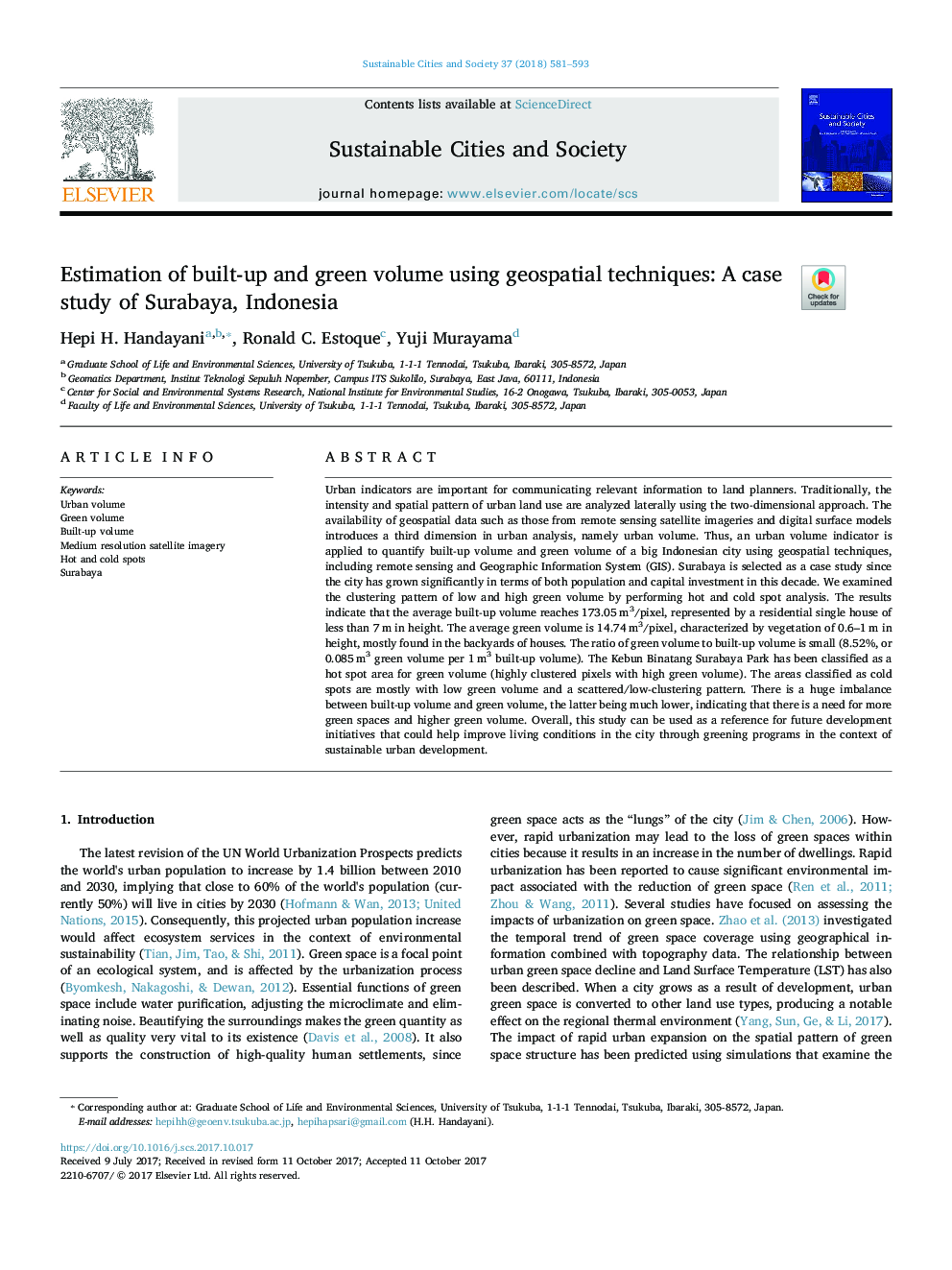| Article ID | Journal | Published Year | Pages | File Type |
|---|---|---|---|---|
| 6775611 | Sustainable Cities and Society | 2018 | 13 Pages |
Abstract
Urban indicators are important for communicating relevant information to land planners. Traditionally, the intensity and spatial pattern of urban land use are analyzed laterally using the two-dimensional approach. The availability of geospatial data such as those from remote sensing satellite imageries and digital surface models introduces a third dimension in urban analysis, namely urban volume. Thus, an urban volume indicator is applied to quantify built-up volume and green volume of a big Indonesian city using geospatial techniques, including remote sensing and Geographic Information System (GIS). Surabaya is selected as a case study since the city has grown significantly in terms of both population and capital investment in this decade. We examined the clustering pattern of low and high green volume by performing hot and cold spot analysis. The results indicate that the average built-up volume reaches 173.05â¯m3/pixel, represented by a residential single house of less than 7â¯m in height. The average green volume is 14.74â¯m3/pixel, characterized by vegetation of 0.6-1â¯m in height, mostly found in the backyards of houses. The ratio of green volume to built-up volume is small (8.52%, or 0.085â¯m3 green volume per 1â¯m3 built-up volume). The Kebun Binatang Surabaya Park has been classified as a hot spot area for green volume (highly clustered pixels with high green volume). The areas classified as cold spots are mostly with low green volume and a scattered/low-clustering pattern. There is a huge imbalance between built-up volume and green volume, the latter being much lower, indicating that there is a need for more green spaces and higher green volume. Overall, this study can be used as a reference for future development initiatives that could help improve living conditions in the city through greening programs in the context of sustainable urban development.
Related Topics
Physical Sciences and Engineering
Energy
Renewable Energy, Sustainability and the Environment
Authors
Hepi H. Handayani, Ronald C. Estoque, Yuji Murayama,
